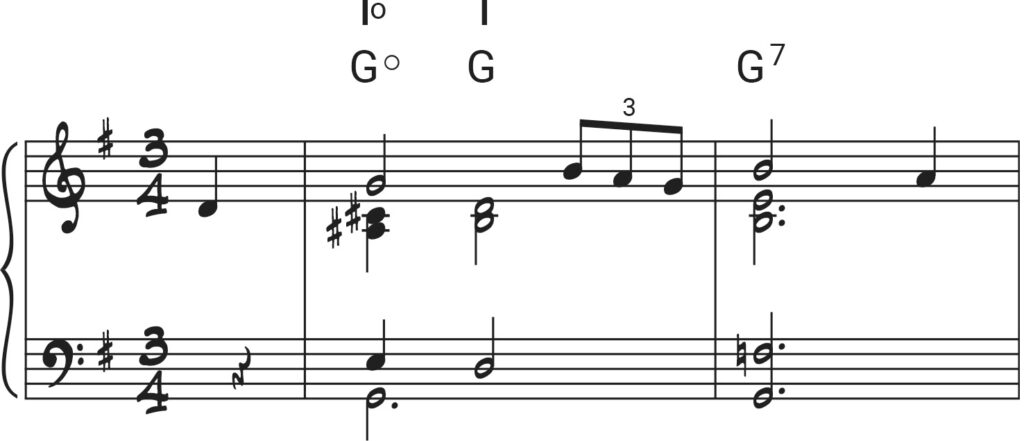Diminished chords are extremely versitile: you can use them to tie chords together, to modulate, to create tension, or to enhance your existing harmonies. In this blog post, I’ll be sharing one particular diminished technique: using root-diminished chords to reharmonize any melody.
What is a diminished chord?
Diminished chords are a great tool when harmonizing a melody. They have a lot of tension, which allows us to use them in a similar way to dominant 7th chords. A great feature of a diminished chord is that it’s completely symmetrical, dividing the octave into 4 equal parts by stacking minor 3rds.

Root-diminished
An interesting way of using a diminished chord is to replace an existing chord with a diminished chord built on the root of that chord. Using the example of the song “Amazing Grace”, we can replace the first chord (G) with a diminished chord. This method works great when you then resolve back to the original chord. It’s almost like you’re teasing: the listener expects the tonic, but you’re not giving it just yet.

Not every melodic note lends itself well for this, but many do: the root, the 2nd, the minor 3rd, the 4th, the major 6th, and the major 7th. Here’s an example using a melody that has a the major 6th, “Happy Birthday”:

This trick is not limited to the tonic! Let’s take a look at the second half of “Danny Boy.” The chords move from the D (I-chord) to G (IV-chord). We could replace the G with a G-diminished chord, withholding it a little longer, before actually playing the G chord. This happens to work perfectly with the melody as well:

Here’s a video with all of the three examples above:
Conclusion
I hope you found this technique us using a root-diminished chord useful. As you can see, this method is very versatile and can be applied to any song or melody. Let me know in the comments if you ever use the root-diminished, or other ways that you like to use diminished chords!
As always, make sure to grab your copy of my free Reharmonization Quick Guide here.

